Rain, wind and chilly conditions added an additional layer of adventure to our morning. Our guide, Yoshi, brought us to the Tsukiji Hongwanji Buddhist Temple around the corner from the Tsukiji Outer Fish Market. Tsukiji translates to ‘reclaimed land’. This area was under water and was reclaimed in the sixteenth century to create a safe area for prayer and for fishing. The temple’s roundish roof is modeled after the leaf of the sacred Bodhi tree. A lotus flower is depicted in the center of the facade. A large pipe organ has been installed inside the main worship hall, and stained glass can be seen above the temple door. All these features are unusual for Buddhist temple especially in Japan. Just outside we saw our first blooming cherry tree of the season.



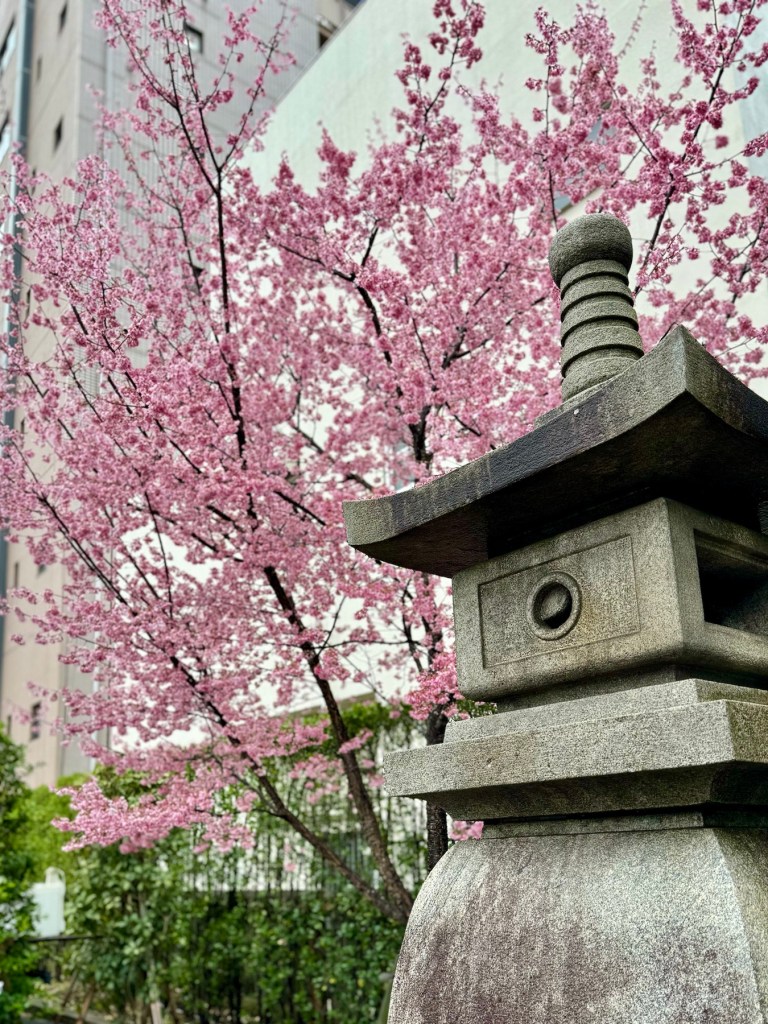
A block away from this temple is the area of the outer fish market. The Wholesale Fish Market famous for fish auctions has been relocated and there is a lottery system to watch the auctions take place. The outer market is several crowded blocks of the fresh fish restaurants along with wholesale and retail shops of kitchen and everyday items. At 9:30 am it almost all tourists. The long lines indicate the best choices of street food or restaurants. There was an easy hour long wait for tamago, the sweet egg omelette, so I took a photo, of someone taking a photo of their purchase!

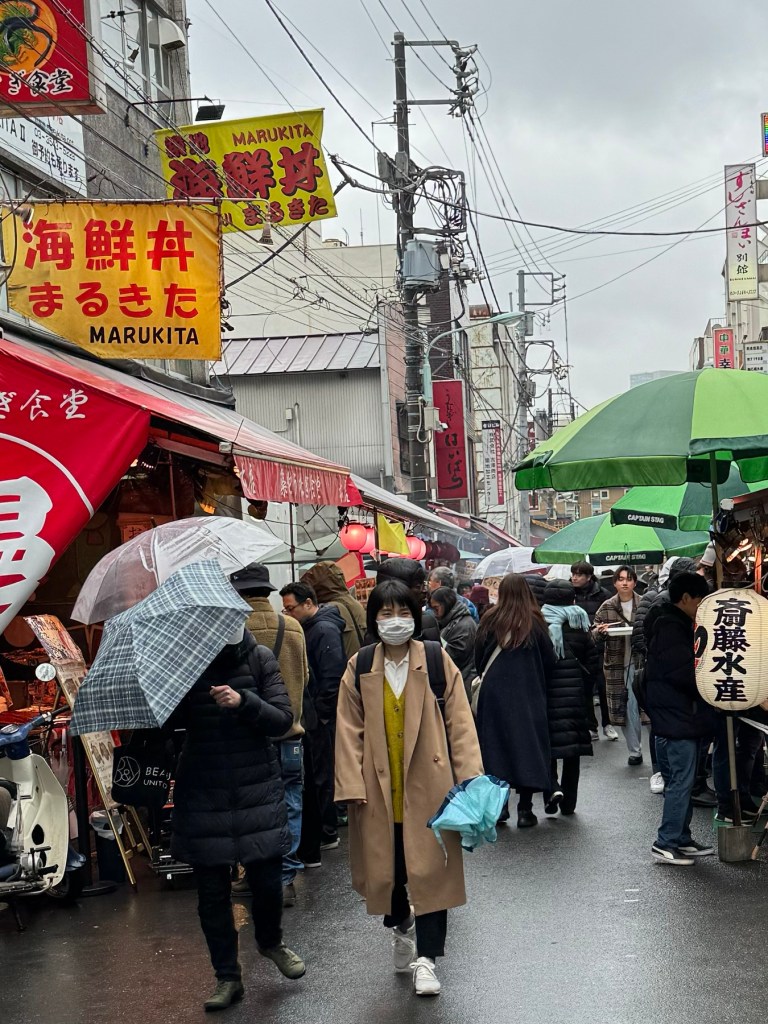
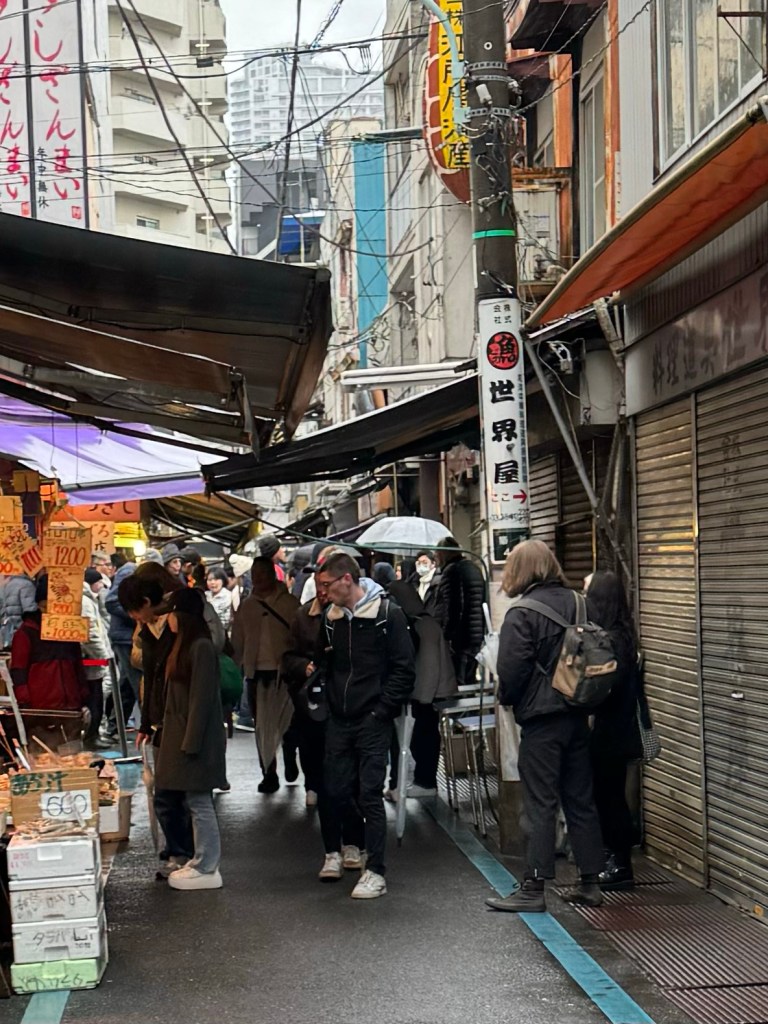

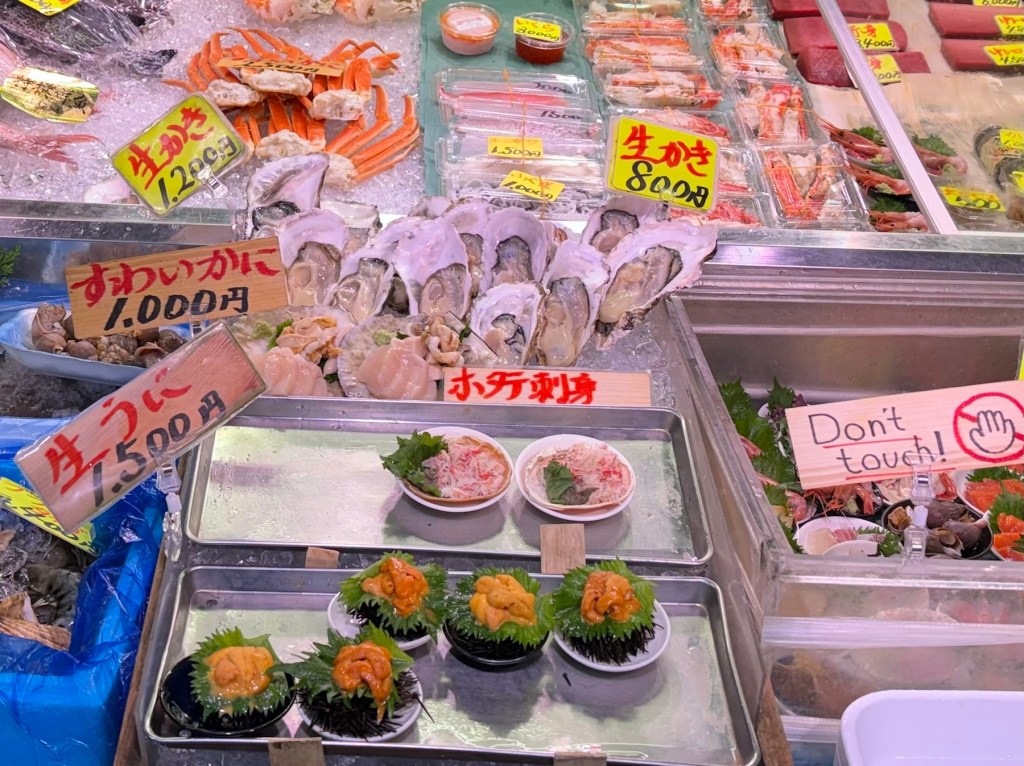
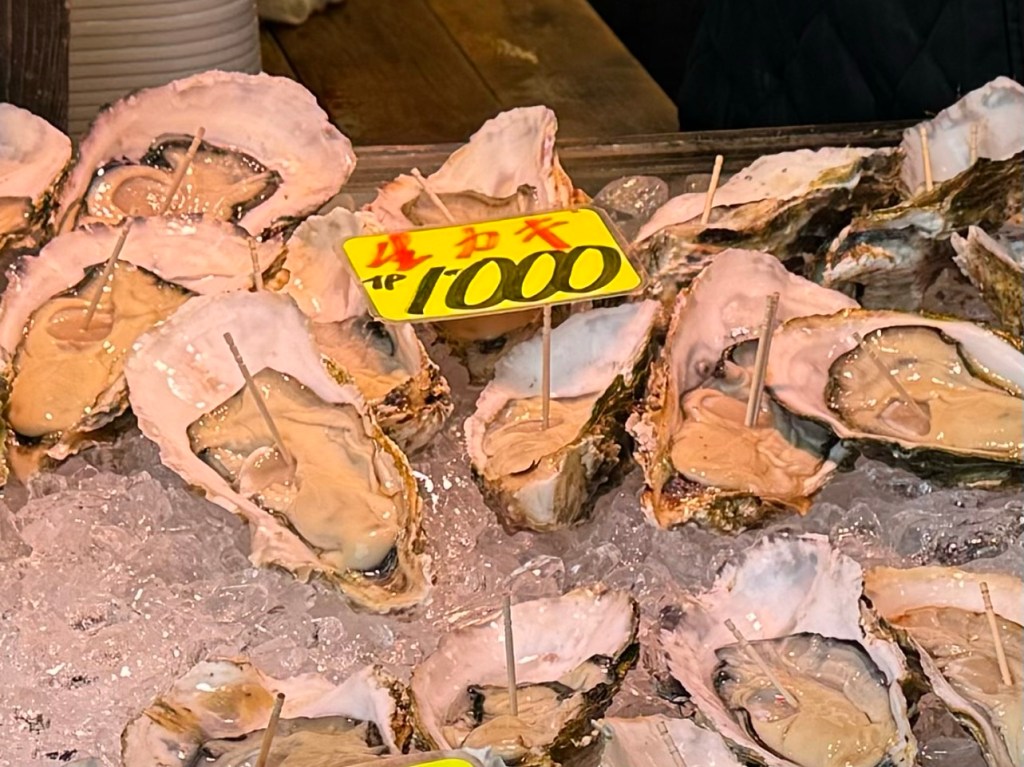
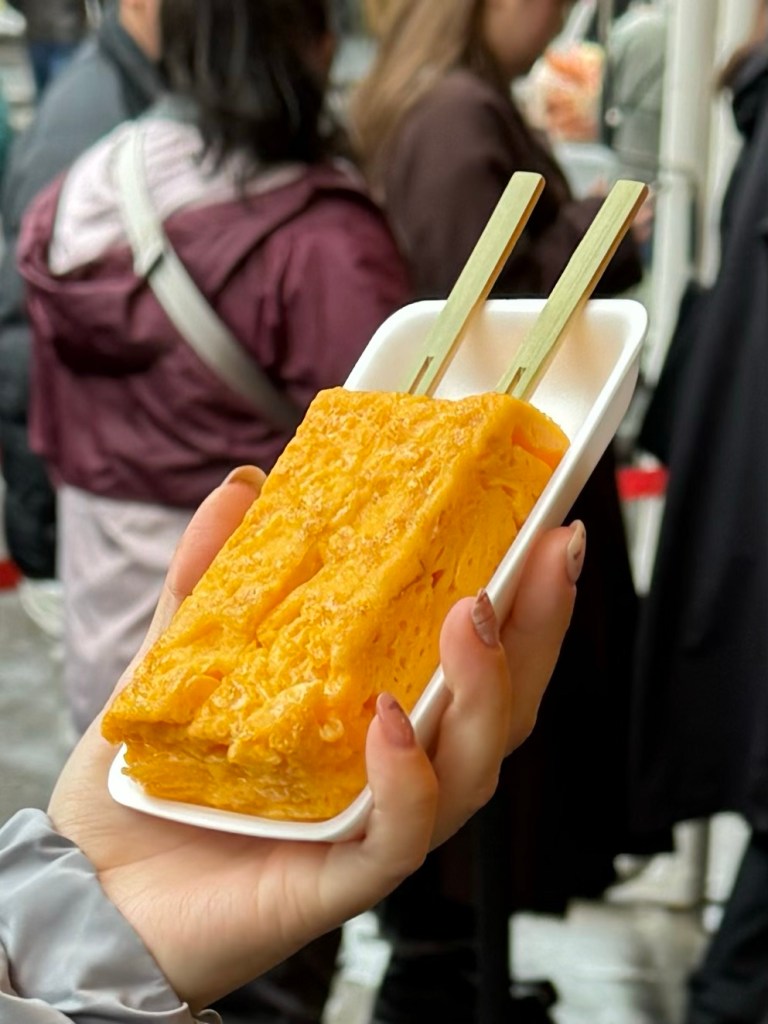

After our street sushi, we headed on the metro to Senso-Ji Temple. Rush-hour over, the trains were not crowded. The subway system in Tokyo is vast and efficient. The older train lines are closer to the surface and the newer lines are deep underground. Each station is well marked and there are barriers along the track edge preventing anything or anyone falling on the tracks. The gates open when the six car trains pull into the station. It is an orderly and civil process. Trains arrive every three minutes. Announcements are in Japanese and in English. It is quiet, clean and convenient.

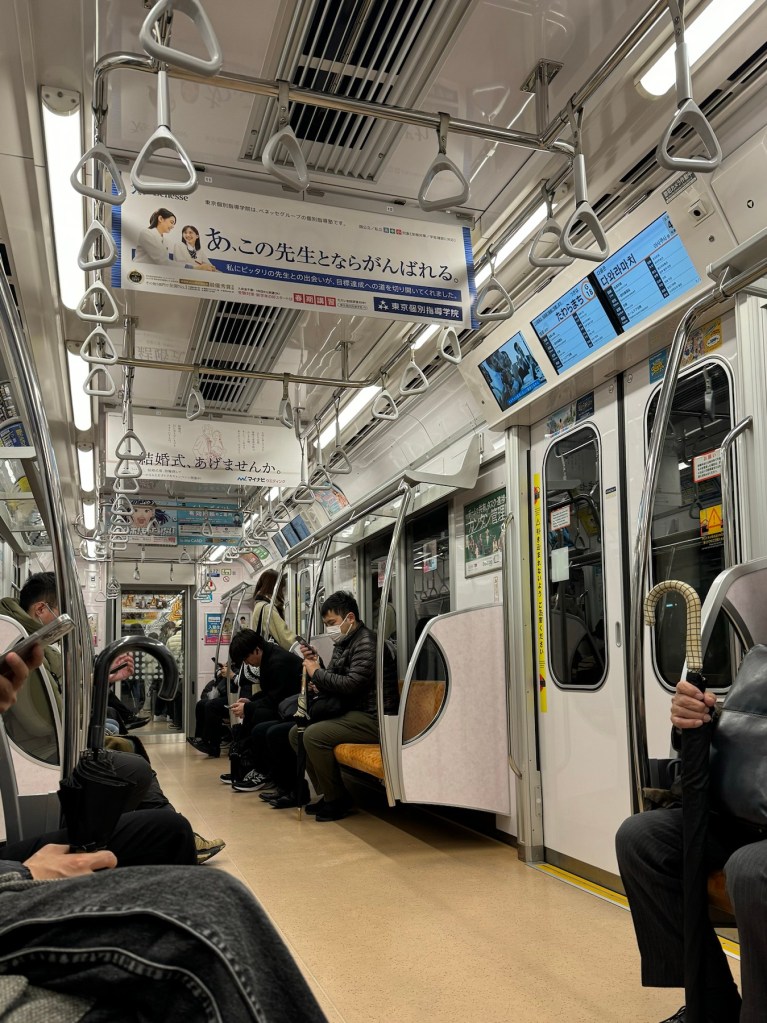
It was still raining and windy when we arrived at the Senso-ji Temple. This is the most tourist-visited temple in Tokyo and has been for centuries. We witnessed firsthand all of the tourists, some decked out in kimonos.


Legend has it that around the middle of the Seventh Century, two brothers fished a statue of Kannon, the Goddess of Mercy out of the river several times (instead of catching fish). This convinced them to build a temple on the site and dedicate their lives to worship. The temple has been rebuilt multiple times due to fires, earthquakes and wars.
The complex begins at the impressive main gate. It is protected by the god of thunder and the god of wind. In the middle is a large paper lantern with a protective dragon carved on a wooden disk closing the bottom of the lantern.
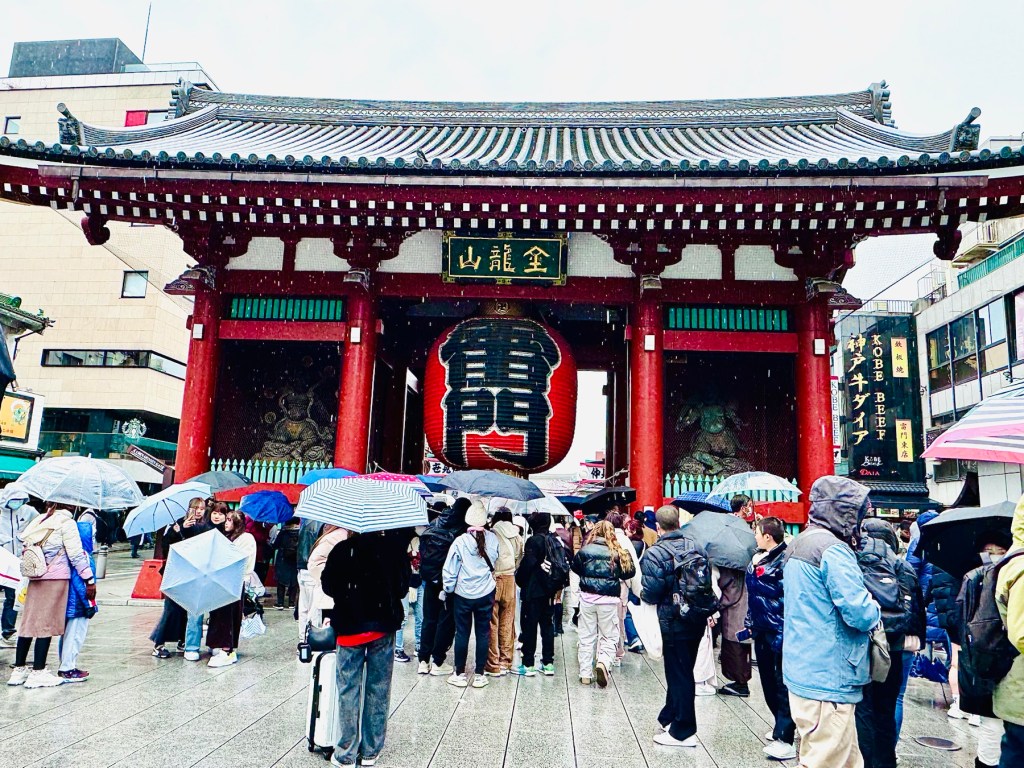

This leads to Nakamise shopping avenue, a pedestrian mall filled with souvenir shops. Close to the shrine is an area to ask Kannon, the Goddess of Mercy, for good luck. A small donation lets you shake a container, a bamboo stick with Japanese characters on it is drawn out…match the characters to a drawer and collect your fortune. If you receive a bad fortune you can tie it to a rack and leave it behind.
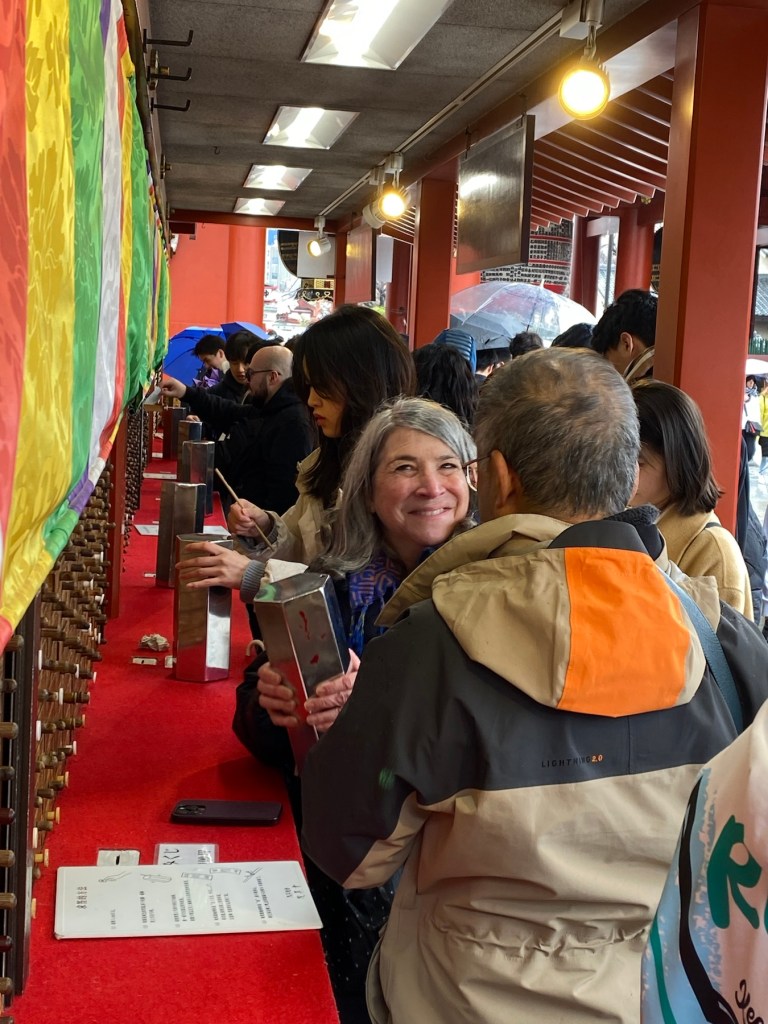
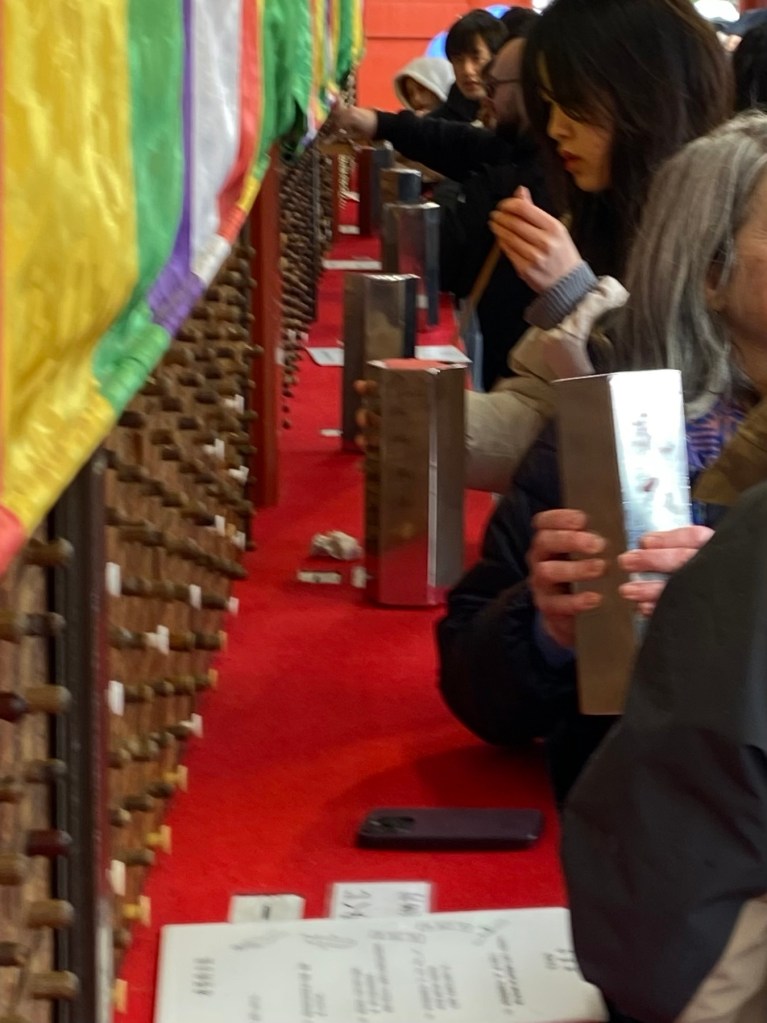


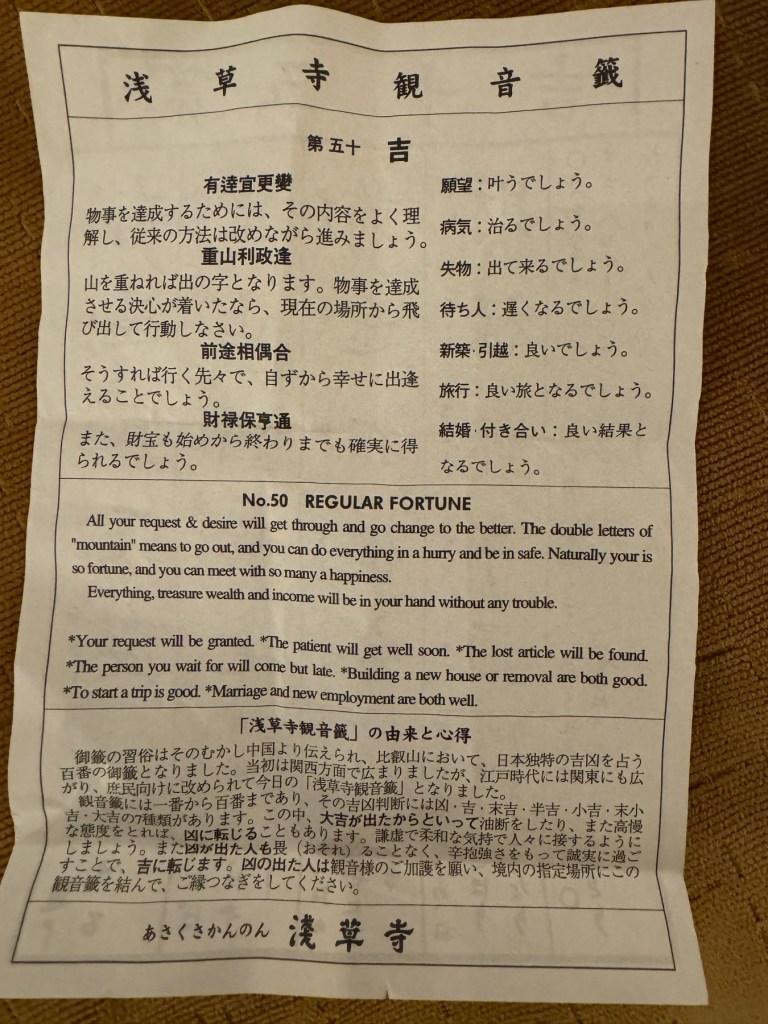
There is also a five story pagoda. Pagodas originate from stupas in India, where Buddha’s ashes were enshrined. The top floor of Senso-Ji’s five-storied pagoda houses the Buddha’s ashes donated in 1966 from Isurumuniya Temple in Sri Lanka.
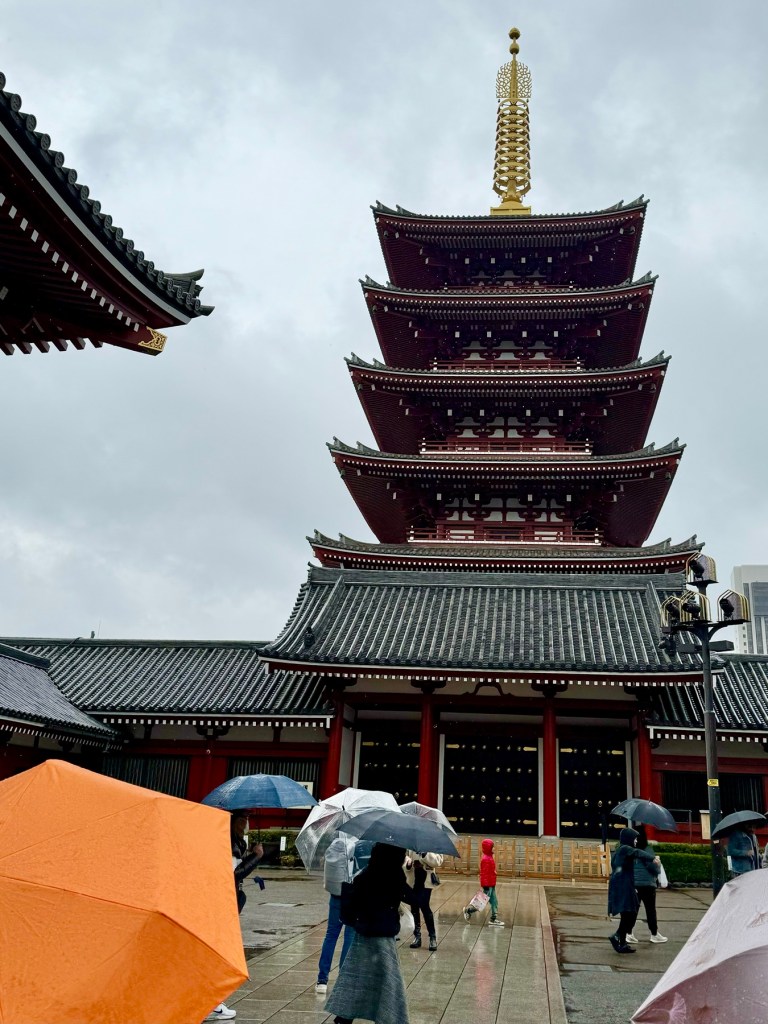
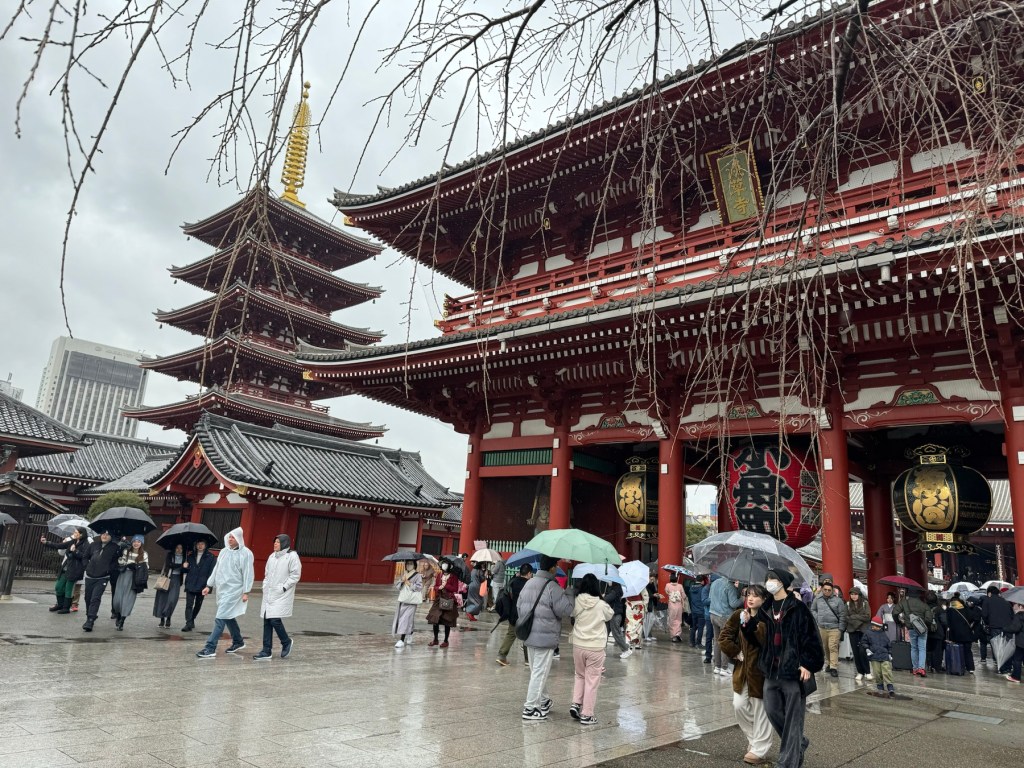

Our next stop was in a quiet neighborhood with virtually no tourists. We arrived at the small and charming Takagi Shrine. This shrine is associated with the tying of bonds, especially romantically, but also rice balls. In Japan, rice balls are known as onigiri “clasped” and “fastened”. Today, with the popularity of onigiri, this has become an Onigiri Shrine. All types of cute onigiri are left here.
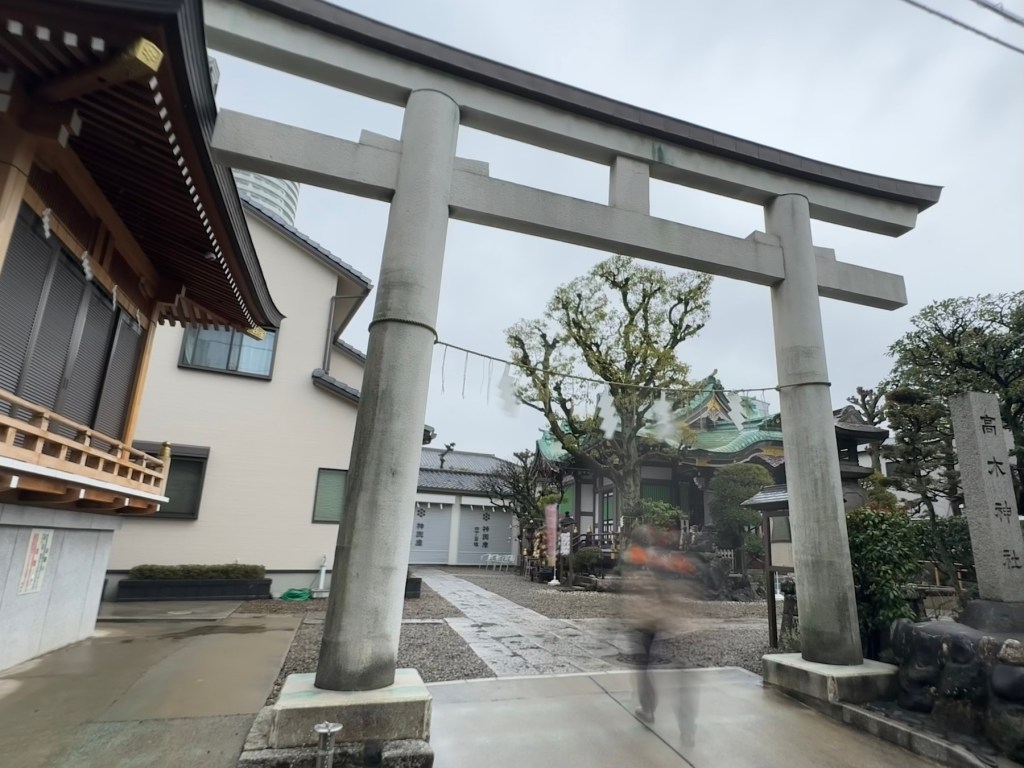

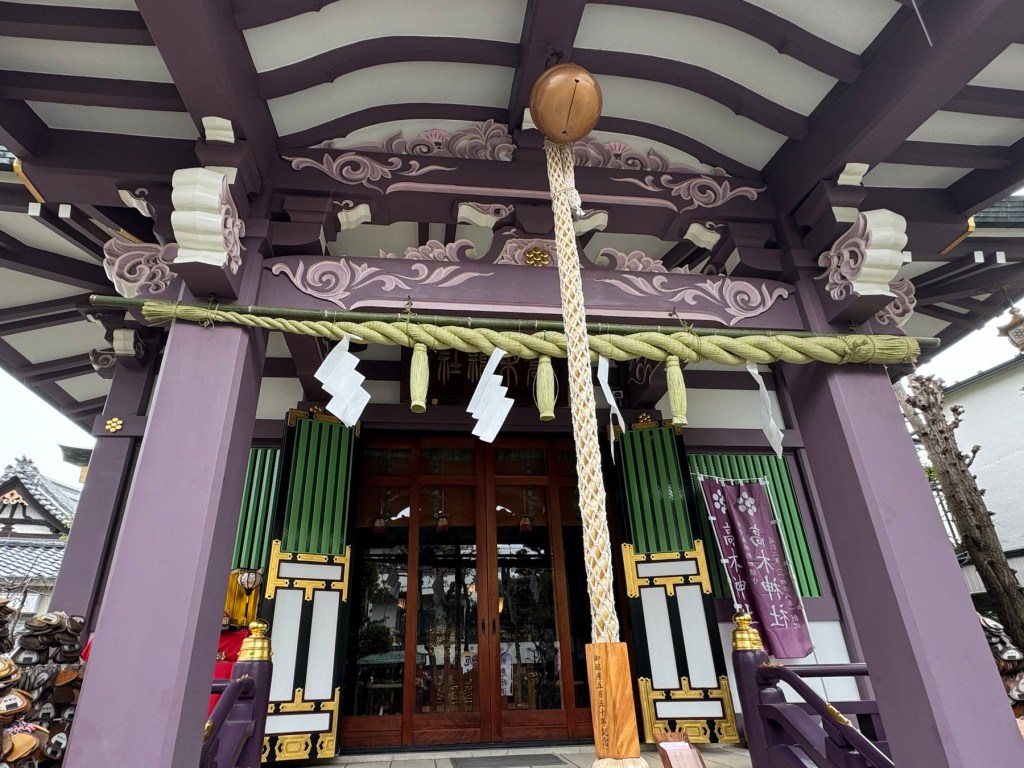


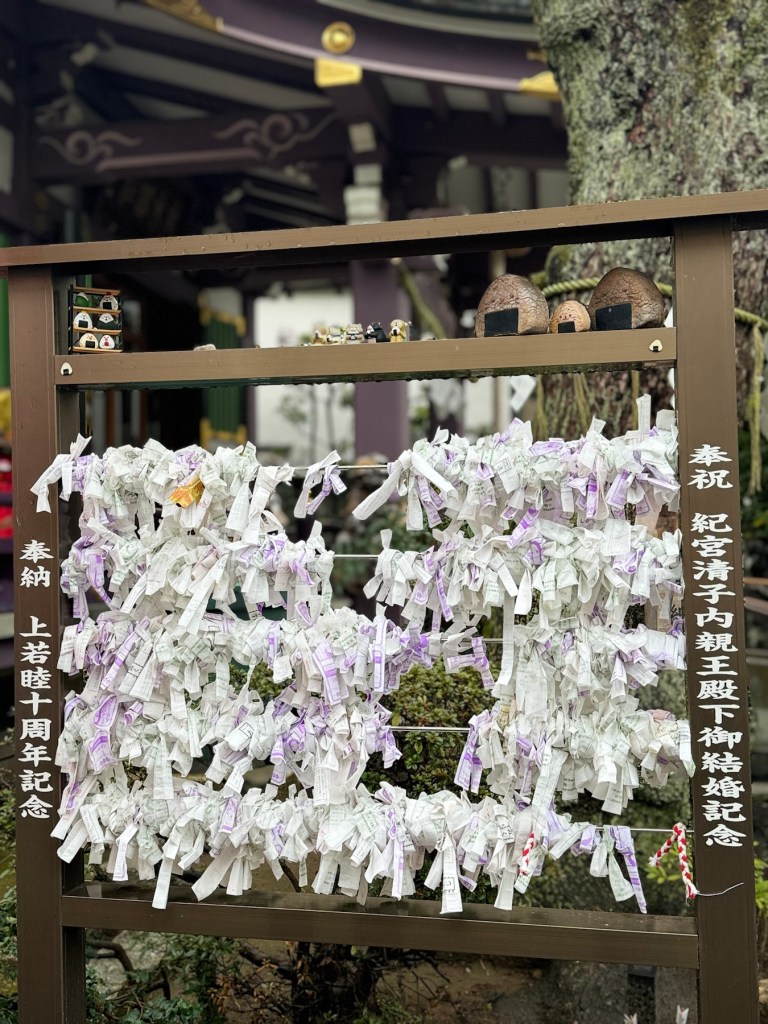

No onigiri for us; instead bowls of ramen were slurped up for lunch too quickly for a photo. I did get a picture of the front of the building in Sumida City!

On our way to Ueno Park, we stopped at the JR train station to collect our future tickets. I secured my first station stamp of a panda and a picture of a cherry blossom (Sakura) with colorful pandas all around. Yes, there are pandas at the zoo in Ueno.

Ueno was once the land of Shogun. There are many lanterns from local lords, smaller versions of shrines and a pine tree with a trained circle to view another shrine below. The grounds also include several museums, a music venue and, of course, amazing cherry trees. These are still a few weeks from full Sakura. Sakura is where the cherry blossoms are in full bloom.

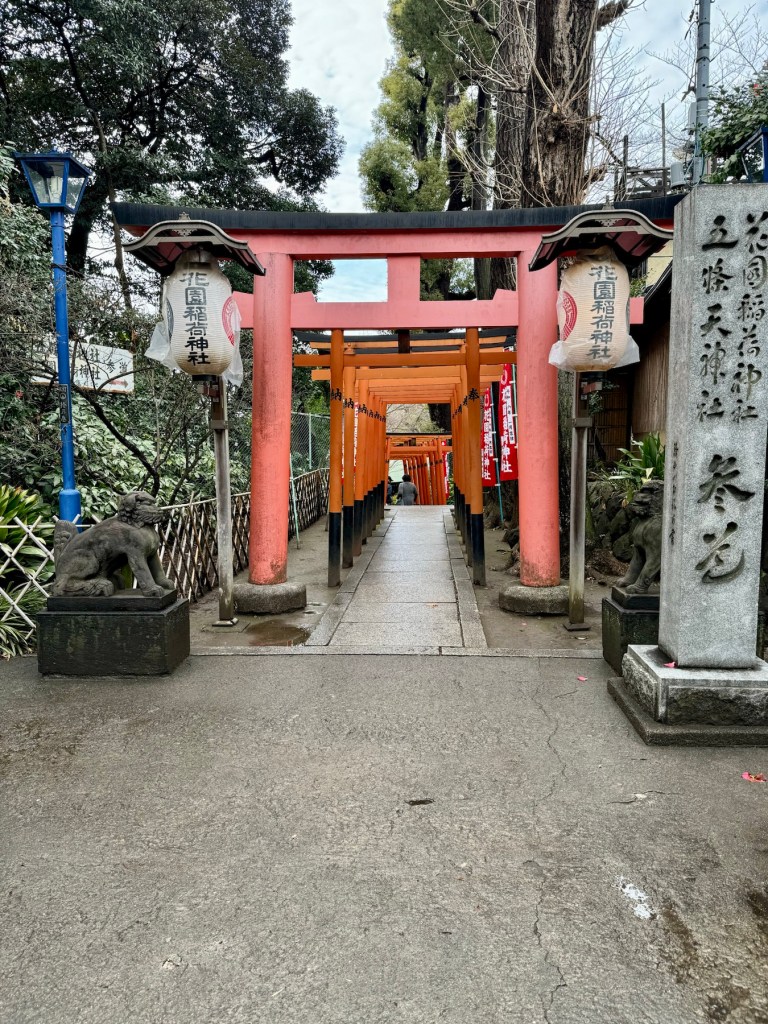
The Inari gates lead to a shrine for the rice farmers.
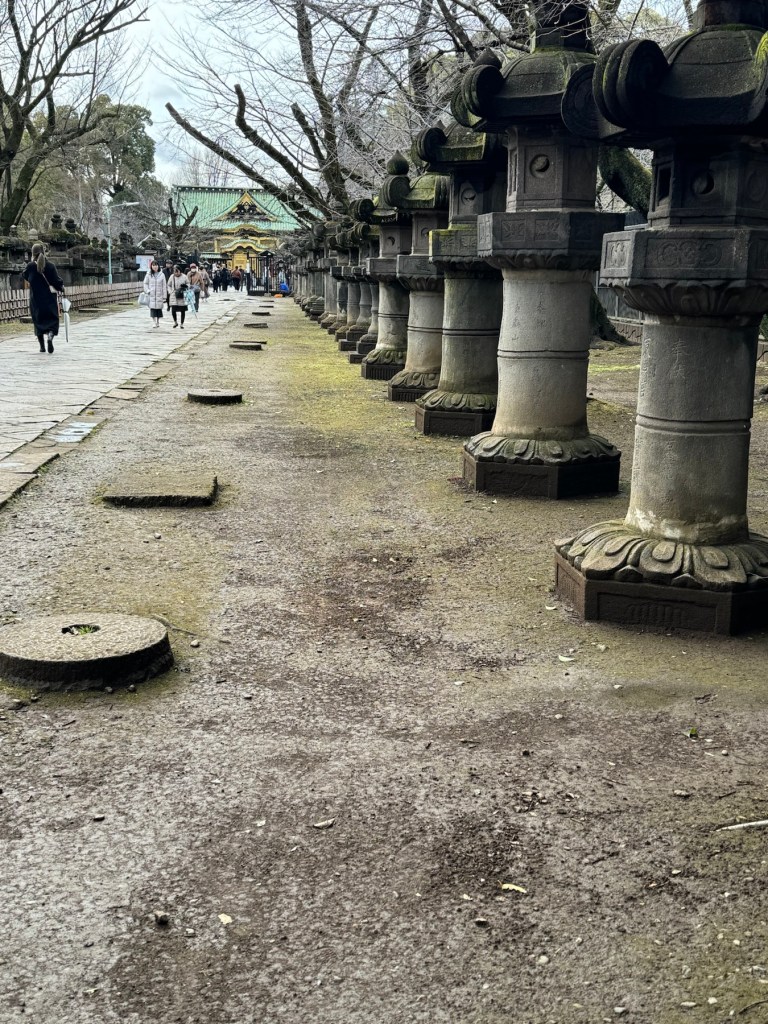
The stone lanterns were imposed ‘gifts’ from local lords to the Shogun and Samurai . They were lit for ceremonies. Each lantern has a date and the name of the lord etched into its base.


Another five story pagoda for homage to the five elements-earth, water, fire, wind and air/space.

Closer to the shrine the lanterns are brass instead of stone. This expresses the wealth and new skills of the times.
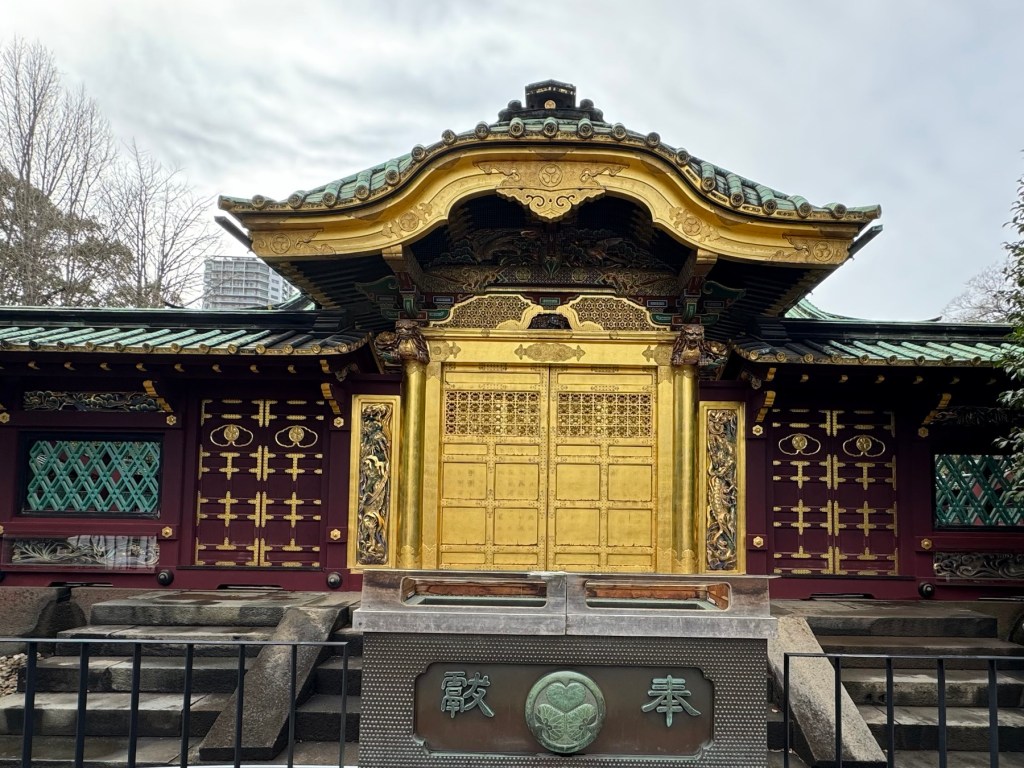


Even the manhole covers are ready for Sakura
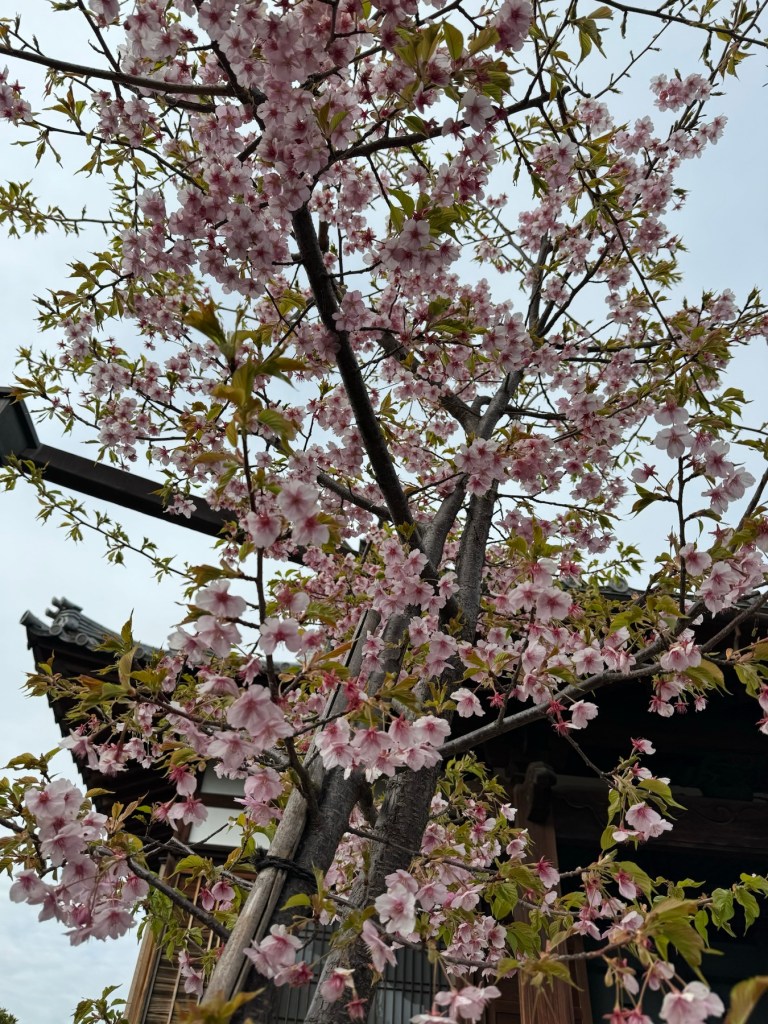
Another subway to Yanaka another older and non-touristy area of Tokyo. We walked along quiet streets with small shops and stopped for a sweet potato snack before heading to the Rikugien Botanical Garden.
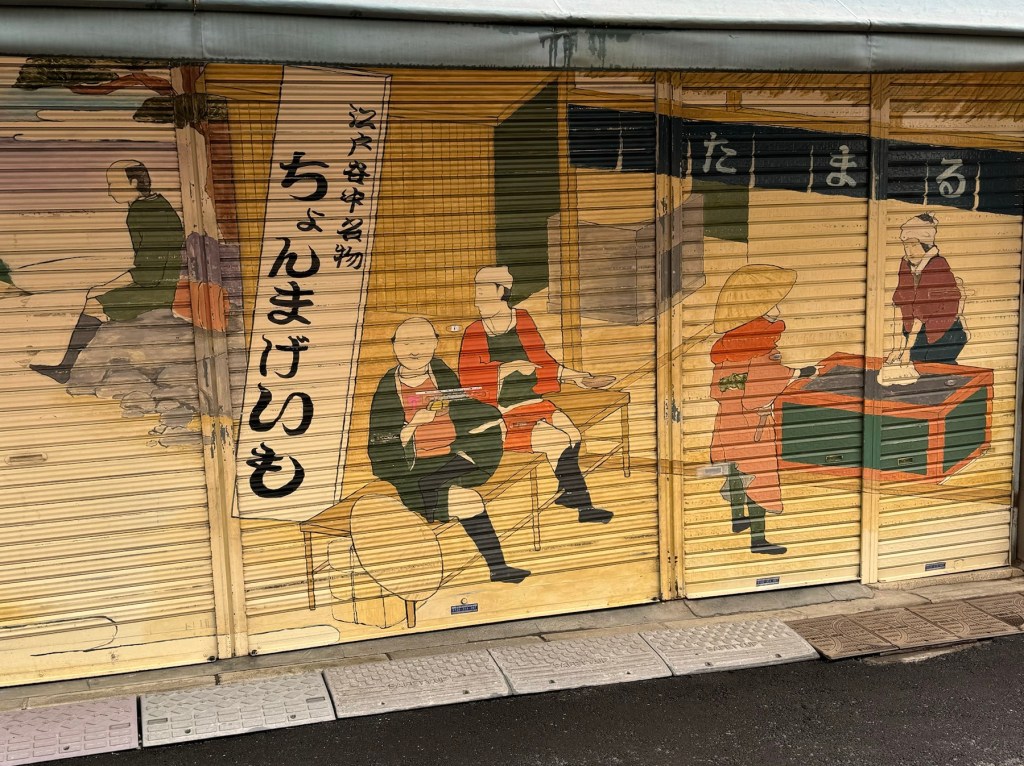
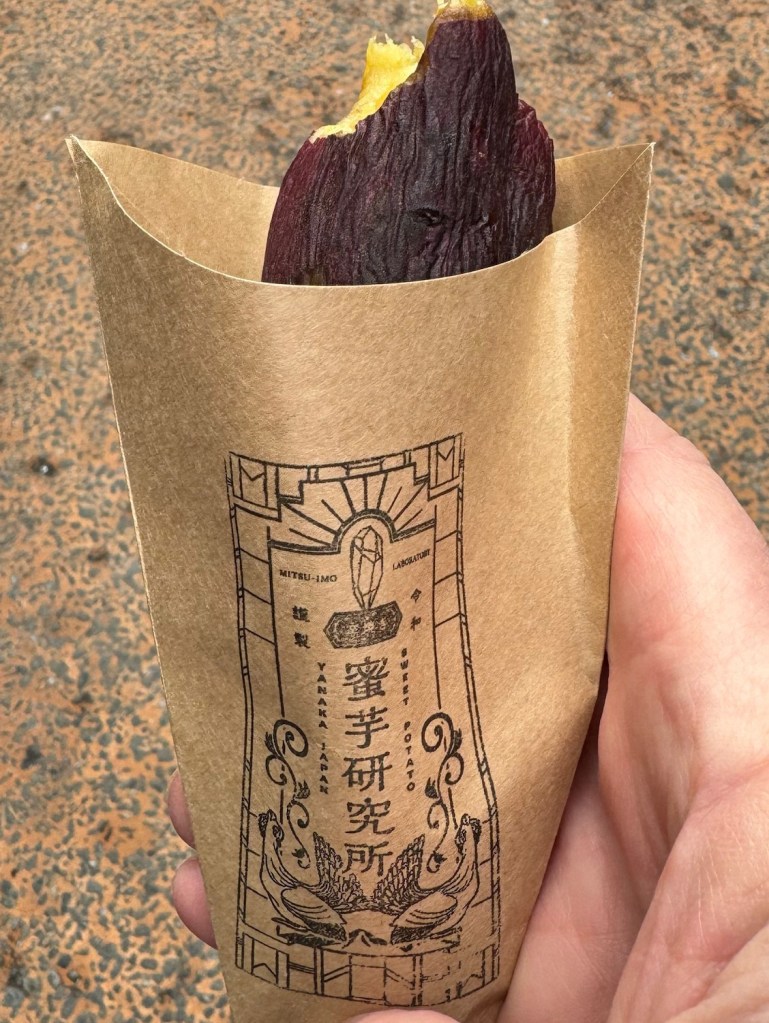
The Rikugien Gardens were designed to coordinate with the ancient Japanese poetry style of Waka. The park is beautiful and it flows from one section to the next, like poetry. The gardens look to be a few weeks away from blooming, but our strong and vivid imagination can easily see the magnificent blooms.
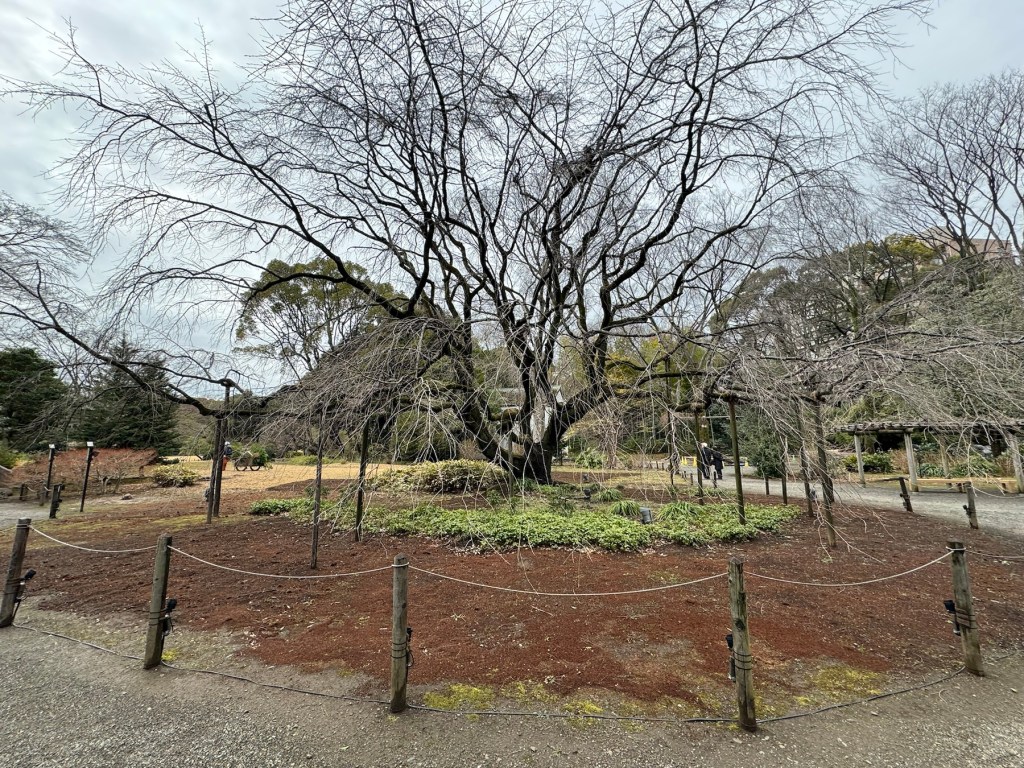

An action-packed day led to sake and strawberry/mango gelato as the perfect nightcap.
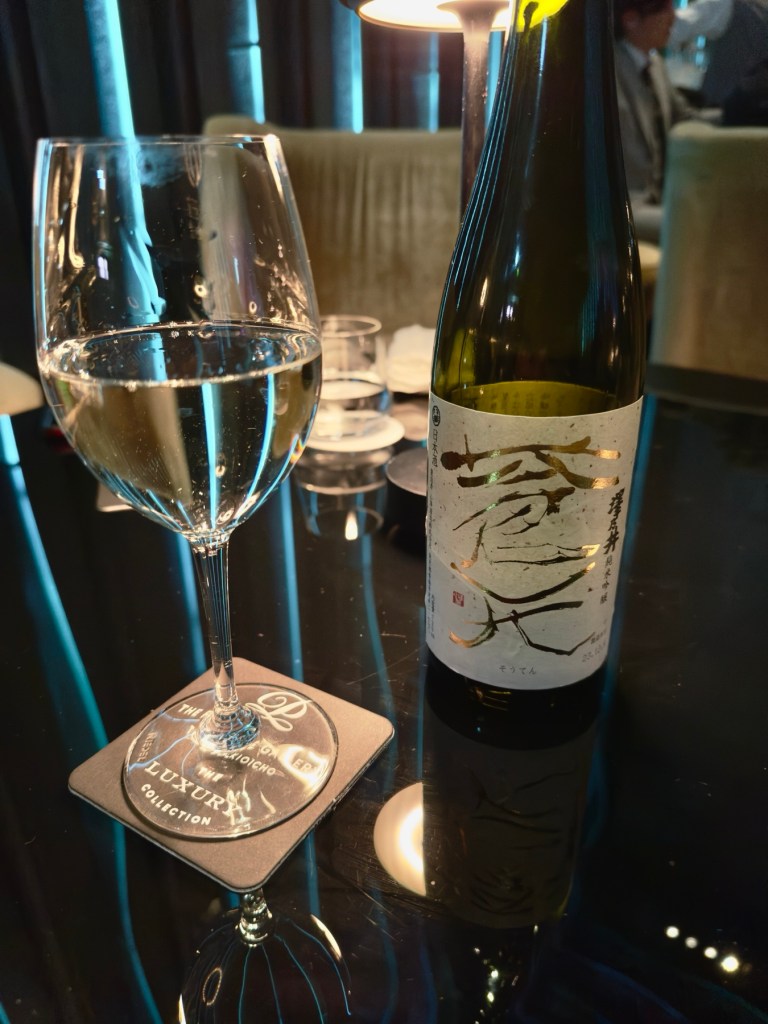
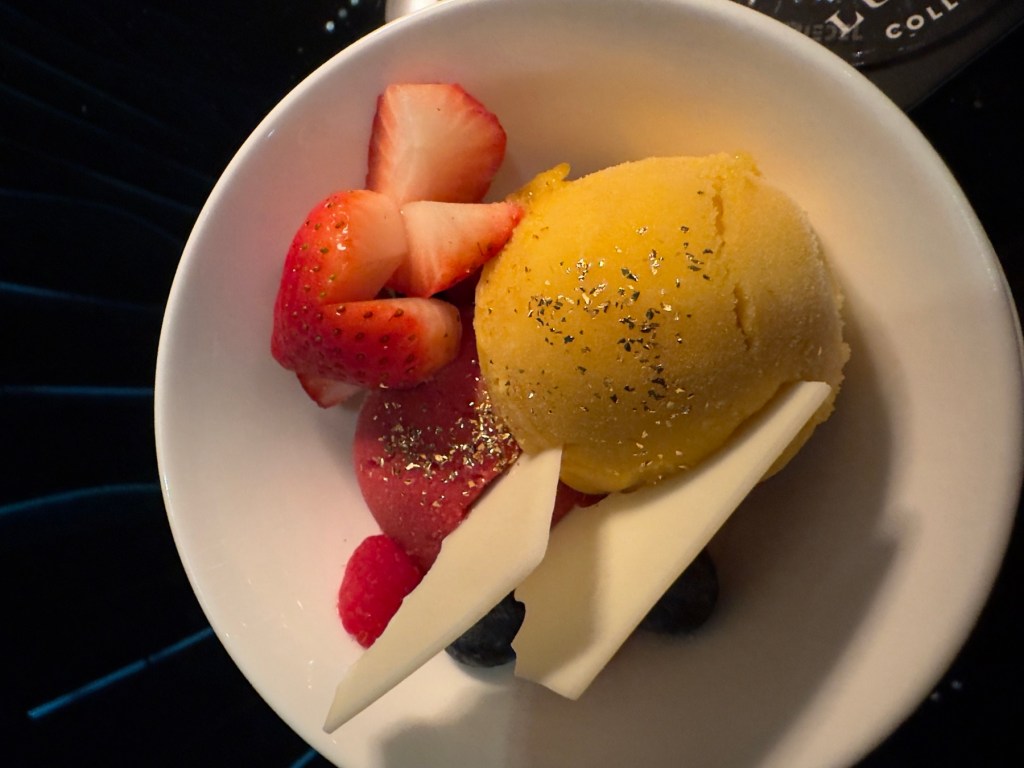
enjoying reading about your trip!
cute rice balls! Kisses! Here’s to the sun commin out! And more and more cherry blossoms! And cool looking snacks! Xxx jane n alec
LikeLiked by 1 person
Spectacular photos and narrative! Loving your posts!
LikeLike